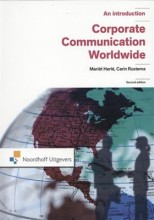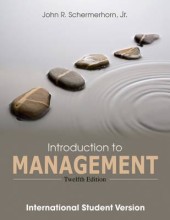Summary: Law And Ai
- This + 400k other summaries
- A unique study and practice tool
- Never study anything twice again
- Get the grades you hope for
- 100% sure, 100% understanding
Read the summary and the most important questions on Law and AI
-
1 Week
-
1.1 What is AI: De Spiegeleire, Stephan, Matthijs Maas, and Tim Sweijs
This is a preview. There are 45 more flashcards available for chapter 1.1
Show more cards here -
AI: concrete AI definitions, two conceptual dimensions
1. Whether itemphasizes theattainment of specific (‘intelligent ’ or ‘sentient ’) thought processes (T ) andreasoning , or whether itemphasizes (‘goal-oriented ’; ‘effective ’)behavior (B);
2. Whether itmeasures success on (1) against human performance (H ), or against an ideal concept ofintelligence – usually defined as ‘rationality ’ (R) -
AI: practical, especially political or military
The focus is often on behavior- focused approaches, emphasizing how artificially intelligent systems act in the world -
- AI: Nilsson's definition- With aligns with Nilsson's definition
- Artificial intelligence is the activity devoted to making machines intelligent, and intelligence is the quality enabling an entity to function appropriately and with foresight in its environment.
- While human performance is essential for gauging (ijking) AI capabilities, the focus for most strategic purposes can be on the thought processes (T) and behavioral performance (B) of AI systems, aiming for equal or superior accuracy, speed, and decision quality compared to humans. -
A typology of different definitions of AI and their underlying approaches: Human Benchmark (H) and Intelligence as Thought Processes (T)
(T-H )Systems that think like humans (e.g.cognitive science )
“Theexciting new effort to makecomputers think ...machines with minds, in the full andliteral sense’'
-Haugeland ,1985
“Theautomation of activities that weassociate with human thinking, activities such asdecision-making , problem solving,learning ...’’
-Bellman ,1978 -
A typology of different definitions of AI and their underlying approaches: Human Benchmark (H) and Intelligence as goal-oriented behavior (B)
(B-H )Systems that act like humans
(Cf .Turing test;Winograd Schema Challenge )
“The art of creatingmachines that performfunctions thatrequire intelligence when performed by people’’
-Kurzweil ,1990
“The study of how to makecomputers do things at which, at the moment, people are better’’
-Rich andKnight ,1991 -
A typology of different definitions of AI and their underlying approaches: Rationality Benchmark (R) and Intelligence as goal-oriented behavior (B)
(B-R )Systems that actrationally
(rational agents)
“A field of study that seeks to explain and emulateintelligent behavior interms ofcomputational processes’’
-Schalkoff ,1990
“The branch of computer science that isconcerned with theautomation ofintelligent behavior’’
-Luger &Stubblefield ,1993 -
A typology of different definitions of AI and their underlying approaches: Rationality Benchmark (R) an Intelligence as Thought Processes (T)
(T-R )Systems that thinkrationally (logic/ laws of thought)
“The study of mentalfaculties through the use ofcomputational models’’
-Charniak andMcDermott ,1985
“The study of thecomputations that make it possible toperceive , reason, and act’’
-Winston ,1992 -
Three generations of AI:
1.Artificial Narrow Intelligence (ANI or narrowAI ): machine intelligence that equals or exceeds human intelligence for specific tasks
-IBM ’sDeep Blue ,Watson ,Google ’sAlphaGO ,High-frequency trading algorithms or any specialized automatic systems performing beyond (buiten) human reach (Google translate, spam filters and theGuidance systems ofpoint-defense anti-missile cannons)
2.Artificial GeneralIntelligence (AGI or “strongAI ”): machine intelligence meeting the full range of human performance across any task.
3.Artificial Superintelligence (ASI ): machine intelligence that exceeds human intelligence across any task. -
How is intelligence etymologically connected to reading and choosing?
It involves the Greek roots 'inter' and 'legere' -
What does the 15th-century definition of intelligence emphasize?
Superior understanding and sagacity
- Higher grades + faster learning
- Never study anything twice
- 100% sure, 100% understanding
Topics related to Summary: Law And Ai
-
What is AI: De Spiegeleire, Stephan, Matthijs Maas, and Tim Sweijs
-
Mittelstadt, Brent Daniel, Patrick Allo, Mariarosaria Taddeo, Sandra Wachter, and Luciano Floridi. 2016: ‘The Ethics of Algorithms: Mapping the Debate’
-
Viljanen, Mika, Technology matters: how algorithm and artificial intelligent technology features affect harms reduction efforts
-
Hildebrandt, Mireille. 2018 Algorithmic regulation and the rule of law
-
Osvald, Marion, Algorithm-assisted decision-making in the public sector: framing the issues using administrative law rules governing discretionary power
-
Karen Yeung (2017) ‘Hypernudge’: Big Data as a mode of regulation by design, Information, Communication & Society, 20:1, 118-136
-
Scherer, Matthew U, (2016), Regulating Artificial Intelligence Systems: Risks, Challenges, Competencies, and Strategies, 29 Harv. J. L. & Tech. 353–400
-
Robot Liability, Gerhard Wagner
-
Gunkel, David J. 2018. ‘The Other Question: Can and Should Robots Have Rights?’
-
Main Idea AI Act
-
Main Idea Liability
































